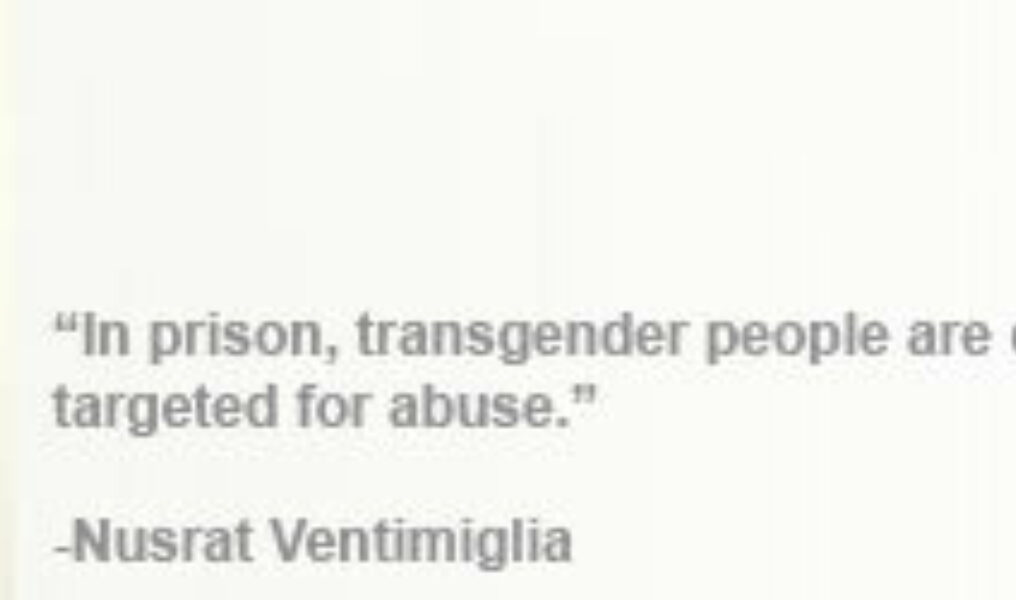By Nusrat Ventimiglia

Rep. Tom Hooker last week introduced a bill that would outlaw the use of public funds to pay for sex reassignment surgery for incarcerated people, among others. Hooker didn't bother checking with the Michigan Department of Corrections on whether such surgeries have ever even been performed for prisoners (the answer is – wait for it – never!), whether the department already has a policy covering the provision of such medical services to prisoners (it does), or whether his proposed bill would even pass constitutional muster were it enacted as law (it wouldn't; see Wisconsin's big fail in this arena). With his complete failure to conduct even cursory research before proposing his bill, Hooker's presumed motivation becomes clear. He hopes to earn a name on the backs of the most vulnerable and marginalized people he can, not just targeting prisoners (as is often done by opportunists), but by targeting transgender prisoners, who are the most vulnerable prison population. Hooker confirmed his bigoted motivation when aligning himself with the American Family Association and Gary Glenn, the head of the AFA's Michigan chapter.
To be clear, MDOC has already laid out policies surrounding medical treatment and housing for transgender inmates. The policy directive covers hormone treatment, which is generally allowed if the prisoner was receiving such treatment prior to incarceration or upon recommendation of the chief medical officer, and sex reassignment surgery, which is generally not allowed except in extreme circumstances and if approved by the chief medical officer. As for placement, transgender prisoners are housed according to the gender assigned at birth unless the individual in question has undergone sex reassignment surgery. This means that prisoners who identify as female can and do end up in male prisons, even if they have a stereotypically feminine appearance, as is true of prisoners who identify as male. Considering the many reasons that some transgender individuals choose not to have surgery, or for whom surgery has never been an option, the result is that transgender prisoners are trapped where their bodies and their safety are in a constant state of limbo.
The road to prison for transgender men and women is well worn. Lesbian, gay, bisexual and transgender youth are far more likely to end up homeless at a young age (around 40 percent of homeless youth identify as LGBT). They experience increased rates of incarceration prior to adjudication, higher rates of unemployment, higher rates of drug use and depression, and are far less likely to find shelter due to outright rejection. Ending this bleak string of statistics is the increased incarceration rate for gender variant and transgender people in general. According to the Transgender, Gender Variant and Intersex Justice Project, approximately 65 percent of transgender women in San Francisco spent time in prison or jail, as did 29 percent of transgender men. Once in prison, transgender people are disproportionately targeted for abuse. Within the prison hierarchy, those with traits perceived to be stereotypically masculine hold a privileged status, while those with traits stereotypically associated with femininity are devalued and subject to abuse. A study of six California prisons found that 67 percent of respondents who identified as LGBT reported sexual assault by another inmate (this was 15 times higher than the rest of the prison population). Prisons, as is true of other institutions, have a shameful history when it comes to treatment of transgender people. Though prisons have come a long way in the U.S., transgender and gay prisoners are still preyed upon and, in most prisons, struggle for survival. It is unlikely that a facility for transgender prisoners with drug or prostitution offenses, such as the one built near Florence, Italy, will be built here any time soon.
A number of steps can be taken to further protect transgender and gay prisoners from abuse in prisons. Recommendations by organizations such as Just Detention International are an excellent example of what corrections facilities can and should do to protect LGBT-identified or perceived inmates. These recommendations include housing guidelines (including separating violent offenders from non-violent offenders) as well as protocols for staff training. The Michigan Department of Corrections has taken a healthy approach to the incarceration of LGBT individuals. Rep. Hooker's bigoted bill not only undermines the responsive action of MDOC, but the bill – if passed – would further unconstitutionally erode protections for an already vulnerable group.










